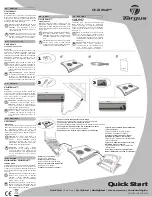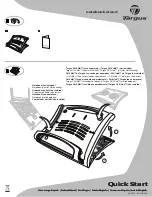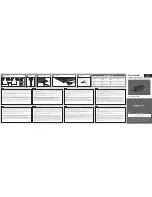
47
Using the Notebook PC
4
PC Card (PCMCIA) Socket
The Notebook PC supports PC Cards (or sometimes referred to as PCMCIA cards) to allow expansion
like PCI cards on desktop computers. This allows you to customize your Notebook PC to meet a wide
range of application needs. The PCMCIA socket can interface with type I or type II PC cards. PC cards
are about the size of a few stacked credit cards and have a 68-pin connector at one end. The PC Card
standard accommodates a number of function, communication, and data storage expansion options. PC
cards come in memory/flash cards, fax/modems, networking adapters, SCSI adapters, MPEG I/II de-
coder cards, Smart Cards, and even wireless modem or LAN cards. The Notebook PC supports PCMCIA
2.1, and 32bit CardBus standards.
The three different PC Card standards actually have different thicknesses. Type I cards are 3.3mm,
Type II cards are 5mm, and Type III cards are 10.5mm thick. Type I and Type II cards can be used in a
single socket and Type III cards take up two sockets. Type III cards are only supported on Notebook
PC’s with two PC card sockets.
32-bit CardBus Support
CardBus support allows PC Cards and their hosts to use 32-bit bus mastering and operate at speeds of
up to 33MHz, transferring data in burst modes comparable with PCI’s 132MB/sec. By comparison, the
standard 16-bit PC Card bus can handle only 20MB/sec. Since the Notebook PC is equipped with
CardBus broader and faster data pathway, it can handle bandwidth-hungry operations, such as 100Mbps
Fast Ethernet, Fast SCSI peripherals, and ISDN-based video conference. The CardBus peripherals sup-
port plug and play.
The CardBus socket is backward-compatible with 16-bit PC Cards serving at 5 volts operation while
CardBus operates at 3.3 volts to reduce power consumption.
Flash Memory Adapter (Optional)
This Notebook PC provides an optional flash memory adapter for use in the PCMCIA Type II slot
which does not require external power source or drivers. The flash memory adapter converts flash
memory (shown below) pins into PCMCIA Type II pins without the use of any controller. This method
provides maximum transfer speeds but the flash memory adapter cannot be used in computers without
the ability to directly read flash memory cards.
Smart Media Card (SM)
Multimedia Card (MMC)
Secure Digital Card (SD)
Memory Stick (MS)
Memory Stick Select
Memory Stick Duo (with MS adapter)
















































